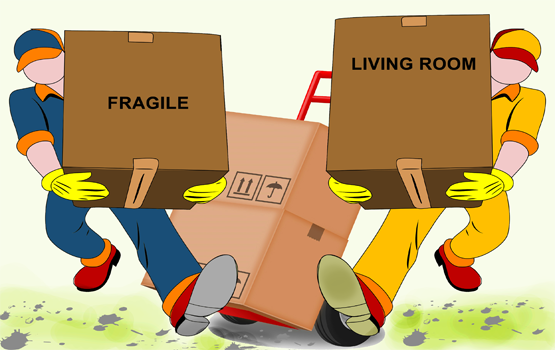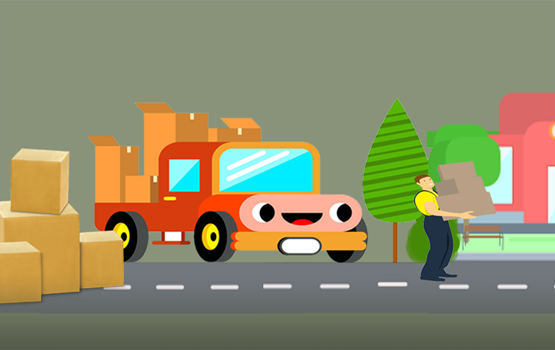Packing Tips You Need to Know
A few general things you need to know about packing:
- Keep boxes to 50 lbs or less.
- Put heavy items in small boxes and light items in big boxes.
- Pack non-breakables tightly in smaller boxes, so they're not too heavy.
- Buy clean newsprint to wrap items, and bubble wrap for padding.
- Pack breakables loosely in plastic storage bins with lots of bubble wrap.
- Rent furniture pads.
- Mark your boxes by room, so you know exactly where everything goes. Color coding or using a number system works great (i.e., red stickers for bedroom or 1 for bathroom.)
- Write "FRAGILE" on all boxes with breakables and stack these boxes on top.
Packing the big things
Beds: Tie bed frames together with tape or rope. Then label the pieces so they're easy to reassemble.
Bureaus: Fill drawers with clothes or fragile, well-wrapped items. Cover with a blanket or furniture pads and rope securely.
Tables: Remove legs, pad and tie together. Put nuts and bolts in a bag and tape under tabletop.
Big appliances: Empty, defrost and drain the fridge, freezer and dishwasher. Clean the interiors and put accessories in bags. Stuff towels between washer sides to prevent rotating and tape down moveable parts. Cover with blankets and tie.
Computers, TVs, & Electronics: Use original packaging, or buy electronic-specific boxes.
Packing the small (but still important) things
Small appliances: Put your microwave, toaster oven, etc. into boxes, and cushion with wadded paper.
Books: Pack them flat in small cartons, alternating bindings. Try to keep each box under 30 lbs.
Clothing: Pack hanging items, including drapes, in wardrobe boxes. Leave small items in drawers.
Collectibles: Wrap fragile items in bubble wrap and tape securely.
CDs: Pack upright and cushion with newspaper.
Kitchenware: Stack pots & pans, and cushion with paper. Put a few of these items in the "open first" box.
Dishes: Never stack them flat. Wrap each piece in bubble wrap. Pack plates & saucers on edge, with cups & bowls placed around them.
Packing the awkward things
Chairs: Wrap arms & legs with bubble wrap. Leave slipcovers on or buy chair bags for protection.
Bicycles: Loosen the handlebars and turn them sideways. Cover chains and pedals to keep grease off other items.
Mirrors, artwork & frames: Wrap small pieces in newsprint and pack in mirror boxes. Cover larger pieces with cardboard, tape securely and stand them along the truck's sides or inside wardrobe boxes.
Lawn furniture: If heavy or bulky, disassemble. Put nuts and bolts in a bag and tie together.
Rugs: Roll up and secure with rope or tape.
Plants: Put in plastic bags with air holes, then in boxes. Water before you leave.
Power and garden tools: Wrap all sharp edges and use plenty of cushioning to prevent injury. Tape long-handled tools together and place small ones in boxes.
Lawn mowers/yard edgers: Empty gasoline from all tanks, and check for oil leaks.
Garage & attic stuff: Use medium-sized boxes for spray paints, brushes, car waxes, etc. Throw away oily rags or anything combustible.
Pets: Always keep them in a pet carrier up front with you. Ask your vet how to make their, and your, move less traumatic.
Moving Tips
Figure out your move strategy and create moving plan. Take your moving plan a step further and create a master moving plan on an oversized calendar. Spend some time planning your daily tasks and write them into the empty boxes on the calendar. After your daily task is finished, cross it done. You will be surprised how much more you can accomplish when you follow your plan and know what you need to do in advance. Also, by braking up your moving plan into daily task, you are making it more manageable and less stressful. Read more...
Tips for Planning a Successful Move
There's little doubt that Canadians are on the move. Whether moving from an apartment to a house, apartment to apartment or home to home, moving is no simple matter. With careful planning, however, your transition can be facilitated in an organized and efficient manner, allowing you the peace of mind you need to settle into your home.
Read more...

